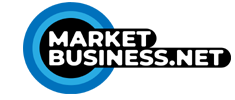Regardless of your feature needs, goals, or company size, automating your hour-tracking and attendance operations can help streamline your processes, minimize errors, and save you money for years to come.
When considering switching from a manual time clock to an automatic time clock software, the sheer number of options available in the market can make it daunting.
Add to this, the complications involved in transitioning your business to the new system. However, planning the move from manual time clock to automatic time tracking and punctuality, like everything else, can be significantly easier with a guide.
In this post, go over various phases to assist you in planning your move to automated time clock software.
If you’re thinking of moving to automatic time monitoring software, make sure you have a strategy in place.
Preparation
It is suggested that you form a decision-making team, regardless of whether your business is small or large, to establish what you require from the Employee Scheduling Software. This group will have to discover areas where automation could help and then choose the appropriate solution for your company’s needs.
A person from each division within your company should be included in the decision-making process to ensure that you choose a complete-time clock software that meets the demands of all levels and departments. For leading the project, choose a qualified project manager. This person is usually in charge of human resources, information technology, or accounting.
It’s recommended that each project member evaluates their current time clock software to prepare for the transfer. They should weigh the desired functionality against the existing constraints. As a result, you and your team can define the needs for your automated time and attendance system.
Once you’ve gathered the feedback from all your team members, you can build a preliminary list of needs and prioritize them.
Planning and Research
When it comes to switching to an automatic time tracker, research and strategy are critical. Therefore, the procedure should be thorough and thorough. In addition, each system is unique, offering various solutions with a variety of deployment choices and price structures.
While you can’t expect to understand the complexity of each time and attendance solution implementation, we strongly advise you to take note of all the features available, integration possibilities, hardware alternatives, and any other factors that match your needs.
Because you will rapidly discover that some vendor goods or deployment techniques will not meet your criteria or key business objectives, the research process may also help you reject viable solutions early on.
There are several factors to examine, but just a few ought to be general, such as the types of connections offered and the features accessible.
Basic Points to Consider
When switching from a manual time clock to automatic technology independent of the provider, there are a few key things to keep in mind. In other words, regardless of the option you pick, the following points should be taken into account. If a solution you’re contemplating doesn’t include these universal factors, but you think they’re important, there are always other options.
Software-as-a-Service (Saas) vs. Licensed Software
Time monitoring software has progressed to the point where there are few distinctions between licensed software and SaaS versions. The majority of the features found in the licensed edition of the program are also found in the SaaS version — and vice versa. Corporate data rules that may restrict SaaS usage, price structures, automated updates (which generally only apply to SaaS models), and uptime needs are some of the factors to consider while trying to choose one alternative over the other.
Data Collection
Each company is unique. Some businesses are fully mobile, necessitating the use of a telephonic time and attendance system, while others choose to use classic time clocks. Others might choose a web-based solution to facilitate remote work.
Experienced suppliers often offer a variety of data gathering options to meet almost any demand.
Synchronizations
At times, the time clock technology does not integrate or synchronize with other business processes. It’s simpler to find viable solutions if you utilize a lesser-known payroll or hrm system and need connectivity with your timesheet system. However, you may also quickly dismiss vendors if they don’t work well with your current systems.
Staff time and attendance monitoring comprise a larger HR management suite that includes employee scheduling, payroll systems, employee self-service, authentication, and other tools. Managing these activities from a single central system is considerably easier and more cost-effective than using several approaches, each of which has its learning process.

